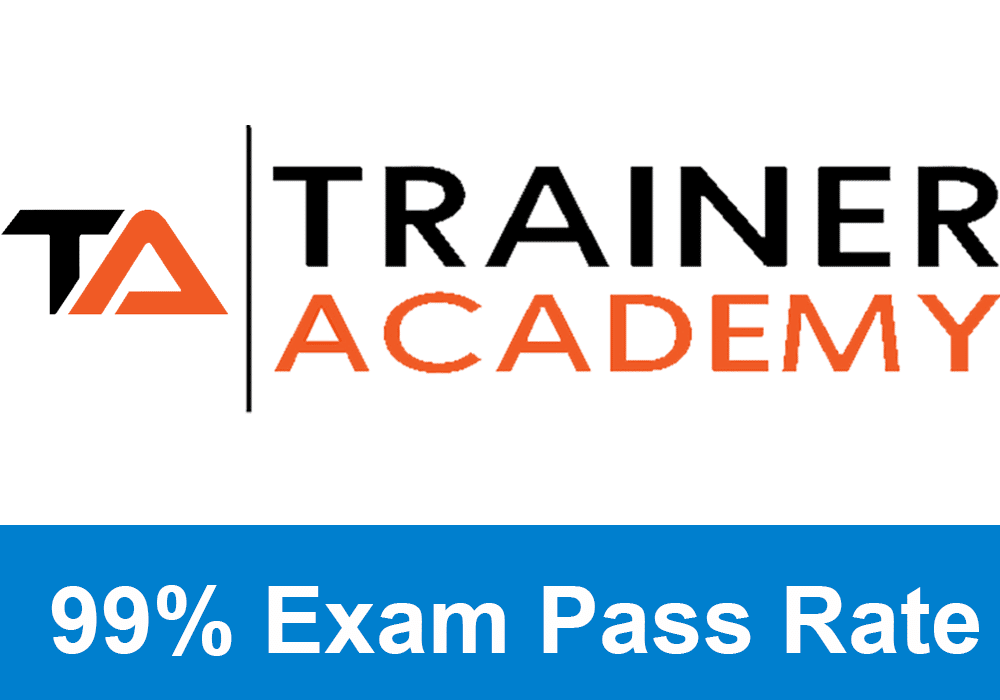
If you have not yet signed up for the NASM CNC certification, receive a big discount here.
Get your copy of the NASM CNC exam cheat sheet. It helps immensely in studying for the exam.
My PTP students report cutting their NASM CNC study time and effort in half with Trainer Academy.
Enjoy the insurance of the Exam Pass Guarantee and Retake Fee Guarantee, plus take advantage of my current discount code PTPJULY for 50% off until July 21st, 2025.
Try it out for free here to see if it’s right for you, or read my detailed review for further insights.
Chapter Goals:
- Discuss the timing of nutrients.
- Find out the strategies used for nutrient timing for performance objectives such as endurance and strength.
- Find out the strategies for timing nutrients to enhance or alter body composition.
- Know the key myths and any hot topics that relate to timing nutrients.
- Talk about the role the timing of nutrient intake plays in the overall nutrition strategy.
Nutrient Timing Introduction
This is a hot topic for all fitness professionals and other academicians. The working definition that is used for nutrient timing is “the temporal positioning of nutrients throughout the day or relative to the bout of exercise for the maximization of performance or body composition.
Overview of Metabolism
Carbohydrates
Exclusive PTP CPT Offers |
||
|---|---|---|
Most Popular Cert | Best Online NCCA Cert | Best Study Materials |
Gold Standard Cert | A Good Option | Best CPT for you?  |
This is the body’s main fuel source and determines the energy quality or the work capacity. They are broken down into glucose to be used by the body for eating, moving, breathing, and simply thinking. The brain may be only 2% of the total weight, but it uses 20% of glucose for the body.
Fiber
This is found in carbs and plays a role in how fast we digest food and, thus, how fast we use energy. It is made of plant parts and does not get digested or absorbed.
Protein
The main thought when it comes to physical activity is protein. This comes from many sources and does more than just repair and build muscle. The proteins are constructed of amino acids and they are needed for things such as repairing and building muscle, being the building blocks of our bones, muscle, skin, cartilage, and the making of enzymes and hormones alike. The recommendation for this macronutrient will be 10 – 35% of total energy intake.
Fat
Fat is a more concentrated energy source for an athlete since it is more than double the provided calories of carbs and protein. We see about nine calories per gram here. Fatty acids are the most endogenous energy in the body due to the amount stored. Fat also plays vital roles in the absorption of nutrients, the regulation of hormones, our heart health, the regulation of blood pressure, protection against impacts to vital organs, and also a role in the health of our skin and hair. The vitamins A, D, E, and K all need fat to be used by our bodies. Fat gives us the feeling of being full quicker. We also store fat in muscles for access when training.
Timing of Nutrients
Nutrition is a priority for athletic populations. This is because we need to give our body sufficient energy levels, repair our worked muscles, regulate all our hormones, and combat bodily fatigue. Each macronutrient has a role that it fills a little better than the other, but technically they share the same use as energy. The body’s last choice for energy use is protein since it serves many more critical functions.
The body usually stores 90 – 120 minutes’ worth of energy for endurance exercise. As the demand for exercise is placed on the body, the muscle glycogen that has been stored is depleted continuously. When people say they’ve hit the wall, this means that they have used up the stores, and the body needs to use other forms of energy. The stores of energy in the body are as follows:
Exclusive PTP CPT Offers |
||
|---|---|---|
Most Popular Cert | Best Online NCCA Cert | Best Study Materials |
Gold Standard Cert | A Good Option | Best CPT for you?  |
- ATP – PC is stored in muscles and only has 5 calories worth of energy ready to go.
- The carb energy source sees 80 calories of energy in the blood glucose, 400 in the liver glycogen stores, and 1500 in the muscle glycogen stores.
- For fat as the energy source, we have 7 calories of energy in our serum free fatty acids, 75 in our serum triglycerides, 2,500 in our muscle triglycerides, and more than 80,000 in our stored adipose tissues around the body.
- The last macronutrient is the protein, and here we store around 30,000 calories for use if needed.
Nutrient Timing Applications: Endurance vs. Strength-Based Activity
Carbs and fats will be the main substrates for use during endurance events. The intensity of the activity will determine how much is contributed by each. For moderate and high intensity work, we will see the use of carbs as the main fuel source, making it so that the muscle and liver glycogen is most important. For the long and slower endurance activities, we see the use of fats more so.
Endurance Exercise
The number of carbs used by endurance athletes will depend on their size, their gender, the training program they follow, and their specific sport of choice. It is normal to have a bit of a struggle to reach the daily calorie needs of an endurance athlete. Carbs are absolutely critical, and we see manipulation of these stores more so for events related to endurance in carb loading techniques. This will be talked about later, but it is essentially the maximization of glycogen sores through the loading of or unloading of carbs on certain days before an event.
Resistance Exercise
The main goal for strength athletes is going to be to have the calories they need for the daily activity they are doing and essentially build and repair their muscles in time for the next session. Resistance exercise is well known to stimulate muscle protein synthesis, which protein ingestion can further stimulate in particular times. Muscle hypertrophy cannot happen without a properly designed resistance training program. The timing of the nutrients is only one small part, but If done properly, we can maximize our results.
Myths and Hot Topics
Nutrition will always have a lot of information that is right and wrong out there.
Is it Possible to Build Muscle and Lose Fat Simultaneously?
Many people have always stated that any weight loss will see the loss in both fat and muscle simultaneously, most of that coming from the lean tissue. More recently, however, we have found that notion challenged. It is possible to gain lean muscle mass and lose fat simultaneously when we look at what we are taking into our bodies. Using protein timing and the proper amounts will allow us to achieve this goal. When eating double the USDA recommendations for protein, we see that people could lose fat and build muscle simultaneously. There was not a significant difference past this double amount.
The time it takes carbohydrates to digest is 1 – 2 hours. For proteins, it is up to 3 – 4 hours, and then for fat, it can be upwards of 6 hours.
Carbohydrate Periodization
This involves the manipulation of daily intake or even on a per meal basis. The scenarios that are used are one of four. There is fasted training, recover low, sleep low/train low, and twice a day training.
Anabolic Window
This refers to the amount of time after exercise when nutrients like protein and carbs can maximize the amount of growth and replenishment that occurs in the body.
The window is usually seen as 30 – 45 minutes following cessation of the exercise and up to 1 – 2 hours for the optimization of protein synthesis.
Breakfast – The Most Important Meal of the Day?
This word, broken down, literally means that you are breaking your fast, and sleeping is that fasting time. Breakfast plays many important roles for the body. When taken, it tells the body to expect glucose throughout the day and puts you in a much better state. When skipped, it puts the body in a state of not expecting those glucose molecules to come in, and thus a more negative state. When we have breakfast, we see the performance, behavior, cognition, and concentration improvements. It also helps us to achieve the appropriate micro and macronutrient goals throughout the day.

 Have a question?
Have a question? 



Tyler Read
PTPioneer Editorial Integrity
All content published on PTPioneer is checked and reviewed extensively by our staff of experienced personal trainers, nutrition coaches, and other Fitness Experts. This is to make sure that the content you are reading is fact-checked for accuracy, contains up-to-date information, and is relevant. We only add trustworthy citations that you can find at the bottom of each article. You can read more about our editorial integrity here.